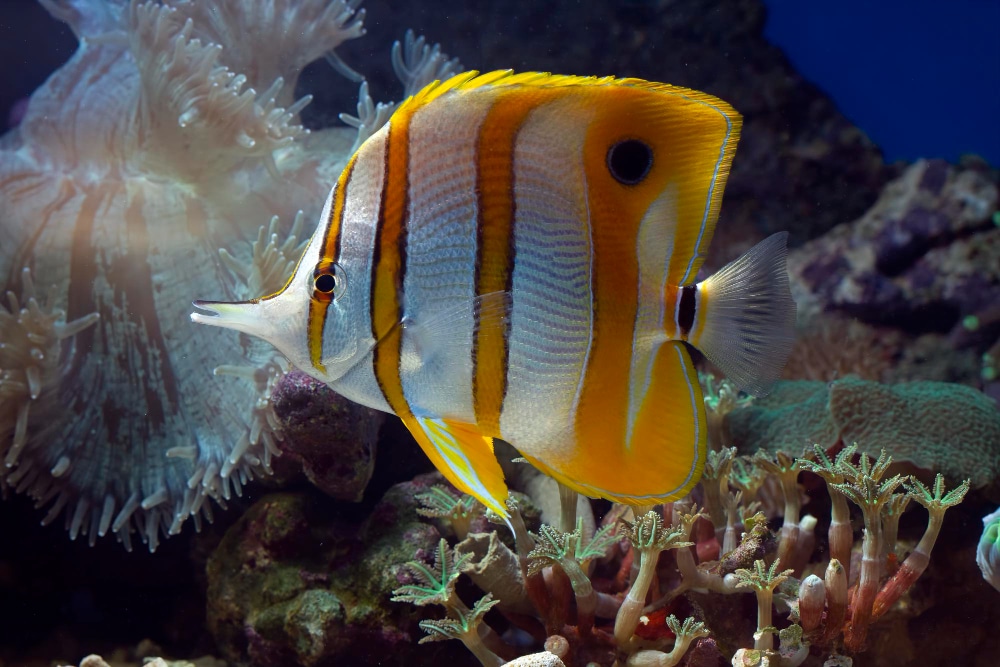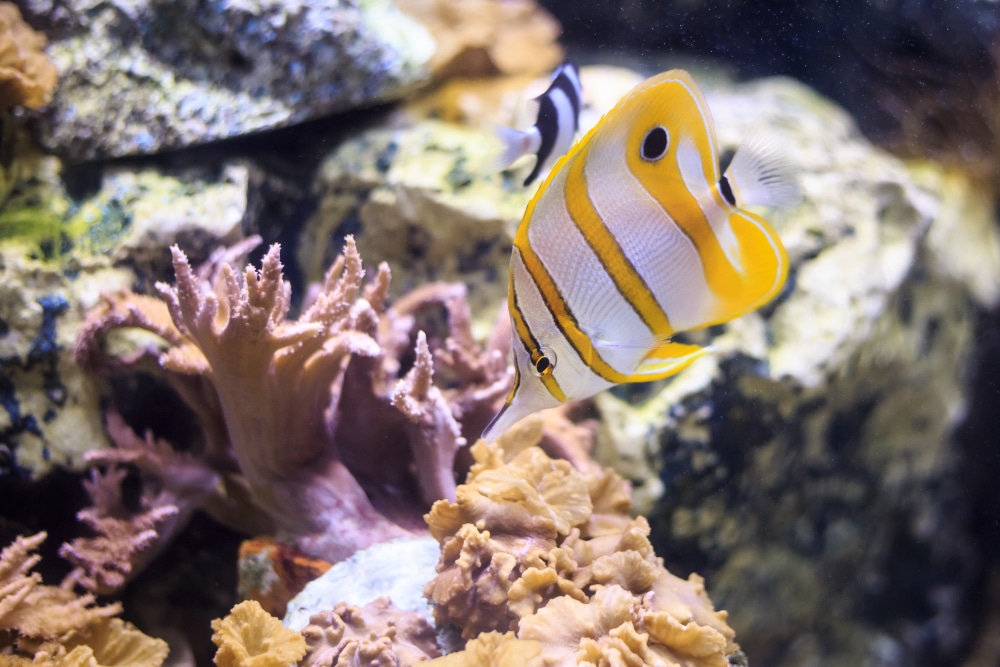Chalice Coral: A Comprehensive Guide for Beginners
Corals are not just beautiful creatures that add color to an underwater world, but they also play a vital role...
Jim Sabellico
May 2, 2022

Chelmon rostratus
Difficult
75°F - 82°F (25°C - 28°C)
Carnivore
8.1–8.4
Copperband butterfly, copperband butterflyfish,
longnose butterflyfish, banded longsnout butterflyfish, beaked coral fish,
long-beaked coral fish
If you’re a reefer, then you need to know about Copperband Butterflyfish. These beautiful fish are a vital part of any reef tank and they play an important role in the ecosystem. In this article, we will discuss everything you need to know about Copperband Butterflyfish.
We’ll cover their habitat, diet, behavior, and more! So if you’re interested in keeping Copperband Butterflyfish, then keep reading!
The Copperband Butterflyfish, also known as the Beaked Coralfish or Orange Stripe Butterfly, has a long, thin nose and mouth for hunting into cracks and holes for food. Copperbands are one of the most difficult fish to keep in captivity and have a very specific diet. They require live foods, Copperbands will also eat frozen foods, but they should be soaked in garlic or vitamin-enriched water first.
In the wild, Copperband Butterflyfish are found in the Indo-Pacific region, from the Red Sea to Hawaii and Australia. They usually inhabit reefs or lagoons and can be found at depths of up to 100 feet. Copperbands are peaceful fish and do well in pairs or groups.
They are frequently confused with angelfish because they are closely related and both of them are referred to as coralfish.
The Copperband Butterflyfish gets its name from its beautiful, iridescent colors and patterns. These patterns look like the wings of a butterfly. The butterflyfish have eyes that are similar to butterflies, as well as eye-like markings on their flanks and dark areas over their eyes that are identical to butterflies.

Copperband Butterflyfish can grow up to eight inches in length but in a home aquarium are usually half that size. They thrive at a tank temperature of 75 to 84 degrees Fahrenheit (24 to 29 degrees Celsius), with a minimum tank size of 75 gallons and plenty of live rock to eat on. This species may be kept in a reef environment.
Copperbands are known to be very finicky eaters and often starve to death in captivity. They need a diet of live foods, such as mysis shrimp, brine shrimp, and copepods. You can also feed them frozen foods that have been soaked in garlic or vitamin-enriched water. Copperbands will also consume some algae and corals.
Other foods you can feed to Copperband Butterflyfish are as follows:
| Food | How Often | How Much |
| Flake Food | 3 Times a day | Enough to consume in 90 Seconds |
| Pellets | 3 Times a week | 1-2 Mini Pellets Per Fish |
| Bloodworms – live | 2 Times a week | 1/4 Teaspoon of worms per fish |
| Bloodworms – Freeze Dried | 2 Times a week | Small Pinch |
| Brine Shrimp – Live | Once a week | 1-2 Brine shrimp per fish |
| Algae Wafers / tablets | 2 Times a week | 1 Tablet or wafer per 10 fish |
Copperbands have been known to eat Aiptasia, but this is not their primary diet. If you are looking for a fish to control the Aiptasia in your tank, then consider another species, such as the Peppermint Shrimp or Berghia Nudibranch.
The copperband butterflyfish is a difficult-to-keep fish like many of its species, and it’s best left to experienced reef keepers. Furthermore, if you want to keep copperband butterflyfish in your reef tank, you’ll need at least 75 gallons and lots of live rock to graze on. Copperbands are peaceful fish, but they may nip at small inverts and corals.
They are also highly prone to parasitic infections. To the greatest extent possible, keep them in a tank with cleaner fish in a communal aquarium.
The average lifespan of a copperband butterflyfish is about 10 years, but they have been known to live up to 15 years in captivity. In the wild, their lifespan is significantly shorter due to predation and environmental stressors. These fish do well when kept in a reef tank with plenty of live rock for hiding and grazing on algae.
They are compatible with most fish, but they may nip at small inverts and corals. Copperbands should not be kept with other butterflyfish species due to their similar diets and fins.
Moreover, they are not compatible with clownfish because they will compete for the same food source. Butterflyfish are solitary and they can get extremely defensive, their false eyespot is used to perplex predators so that they don’t know which end to strike.
Copperband Butterflyfish are beautiful additions to any reef tank, but there are some things you need to know before you add one to your tank. We’ve covered the basics in this article, but if you have any other questions, please don’t hesitate to contact us. Thanks for reading!
Related article: Top 5 Beginner-Friendly Corals

I am the founder of J. Louis, a digital marketing agency focused on providing innovative solutions and strategies built on a foundation of creative design and technology. A family man who loves travel and reef tanks, I’ve been coined as a jack of all trades, master of a few of them, most specifically website and sales funnel design, monetization and growth strategies, and viral marketing. I began pursuing my passions for business by cutting my neighbor’s lawns when I was just 8 years old and never looked back. Over the past 20 years, I have amassed significant experience providing consulting, design and development services for Fortune 500 companies, government, retail, private individuals, and A-list celebrities.
Corals are not just beautiful creatures that add color to an underwater world, but they also play a vital role...
As we move into the new year, it's time to start thinking about what reef tank LED lighting kits will...

Proceeds from all purchases go directly to Great Barrier Reef Foundation and supporting their mission.
Want to stay connected with all the latest news in the Reef Tank Addict community? Drop your email below!
Proudly Supporting The Great Barrier Reef Foundation
Copyright © 2023. All rights reserved.